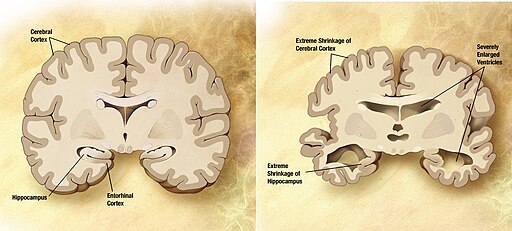University of Wisconsin-Madison Professor, Shaoqin “Sarah” Gong is ready to take on finding cures for brain disease such as Alzheimer’s and Parkinson’s disease. Gong and her colleagues strive to enable a “noninvasive, safe and efficient delivery of CRISPR genome editors” that can be used as forms of therapy for these diseases. According to MedlinePlus, there are many forms of brain disease, some caused by tumor, injury, genetics; however, Gong’s research focuses on degenerative nerve diseases. Degenerative nerve diseases can affect balance, movement, talking, breathing and heart function. The reason cures for degenerative nerve disease are difficult to create is because of the blood brain barrier. According to the American Society for MicroBiology, the blood brain barrier is a feature of the brain and central nervous system blocking the entrance of “microorganisms, such as bacteria, fungi, viruses or parasites, that may be circulating in the bloodstream”. Unfortunately, the barrier block is a very selective site that won’t let vaccines and therapies through. Fortunately, Gong’s nano-capsules with CRISPR’s genome editors point toward brain disease therapy and a cure.
Gong’s study proposes dissolvable nano sized capsules that can carry CRISPR genome editing tools into organs. According to CRISPR Therapeutics, CRISPR technology meaning Clustered Regularly Interspaced Short Palindromic Repeats is an “efficient and versatile gene-editing technology we can harness to modify, delete or correct precise regions of our DNA”. CRISPR edits genes by “precisely cutting DNA and then letting natural DNA repair processes take over.” CRISPR targets mutated segments of DNA that can produce abnormal protein causing diseases such as degenerative nerve disease. CRISPR works with the help of a guide RNA and Cas9. Together the complex can recognize and bind to a site next to a specific target sequence of DNA that would lead to the production of an abnormal protein. CAS9 can cut the DNA and remove a segment. As a result natural DNA pathways occur and RNA polymerase will return to rebuild and correct the mutated segment.
Consequently with the addition of glucose and amino acids the nano-capsules containing CRISPR Technology can pass through the blood brain barrier to conduct gene editing to target the gene for the amyloid precursor protein that is associated with Alzheimer’s. The topic of gene editing coincides with the Gene Expression portion of the AP Biology curriculum. In the topic of gene expressions 2 processes are emphasized: transcription (the process of making an RNA copy of DNA) and translation ( the process of making proteins using genetic information from RNA). In the CRISPR technology the editing of genes closely relates to the process of transcription. Transcription mistakes can be made which can lead to mutations, these mutations can potentially cause nonsense, missense or deletions of nucleotides ultimately producing wrong codons that would code for incorrect/abnormal proteins. However, the CRISPR technology would be able to correct these mutations in the DNA, replacing the incorrect nucleotides to correct ones and preventing the production of abnormal proteins. Fortunately, Gong’s unique nano-capsules have successfully been tested on mice, giving scientists hope that treatments and therapy for these brain diseases are coming soon and can help many.



Leave a Reply